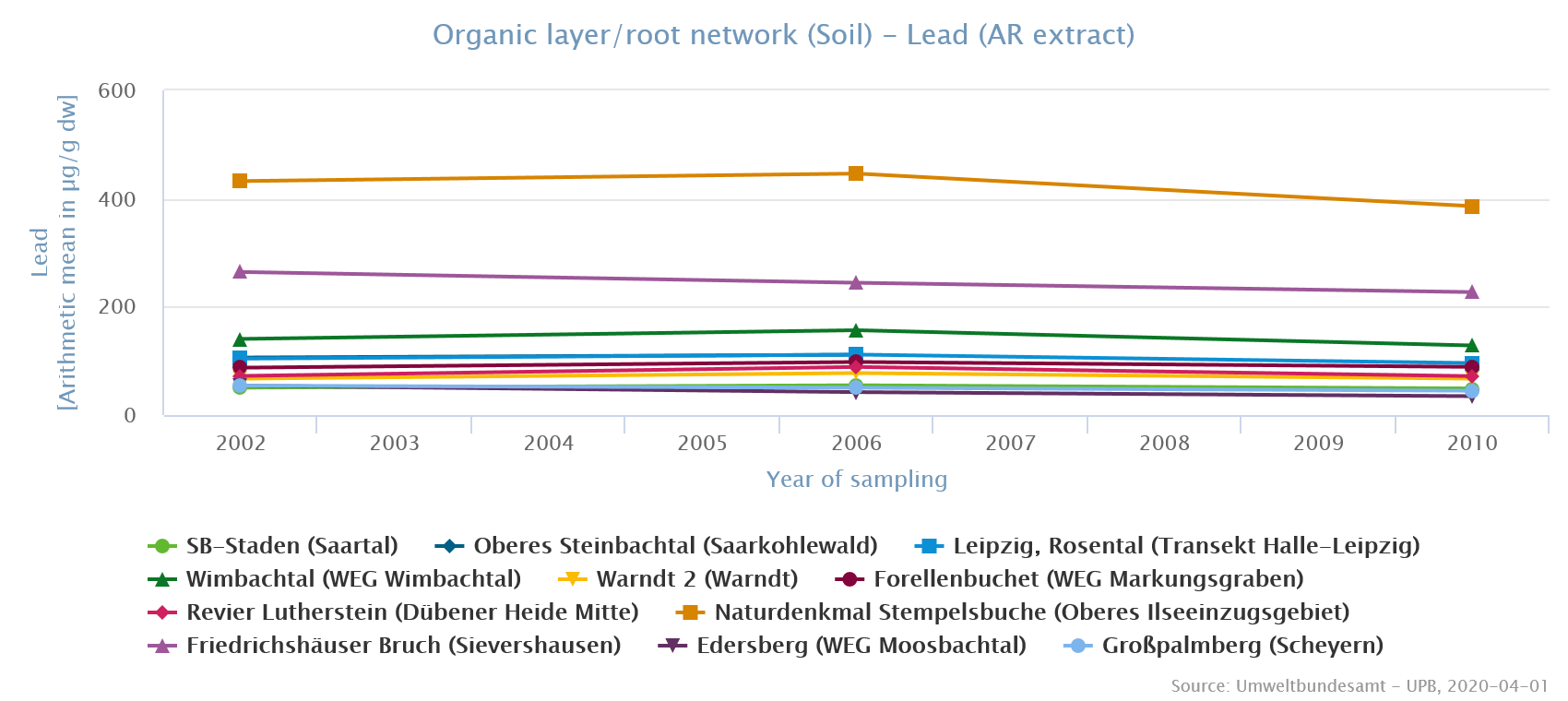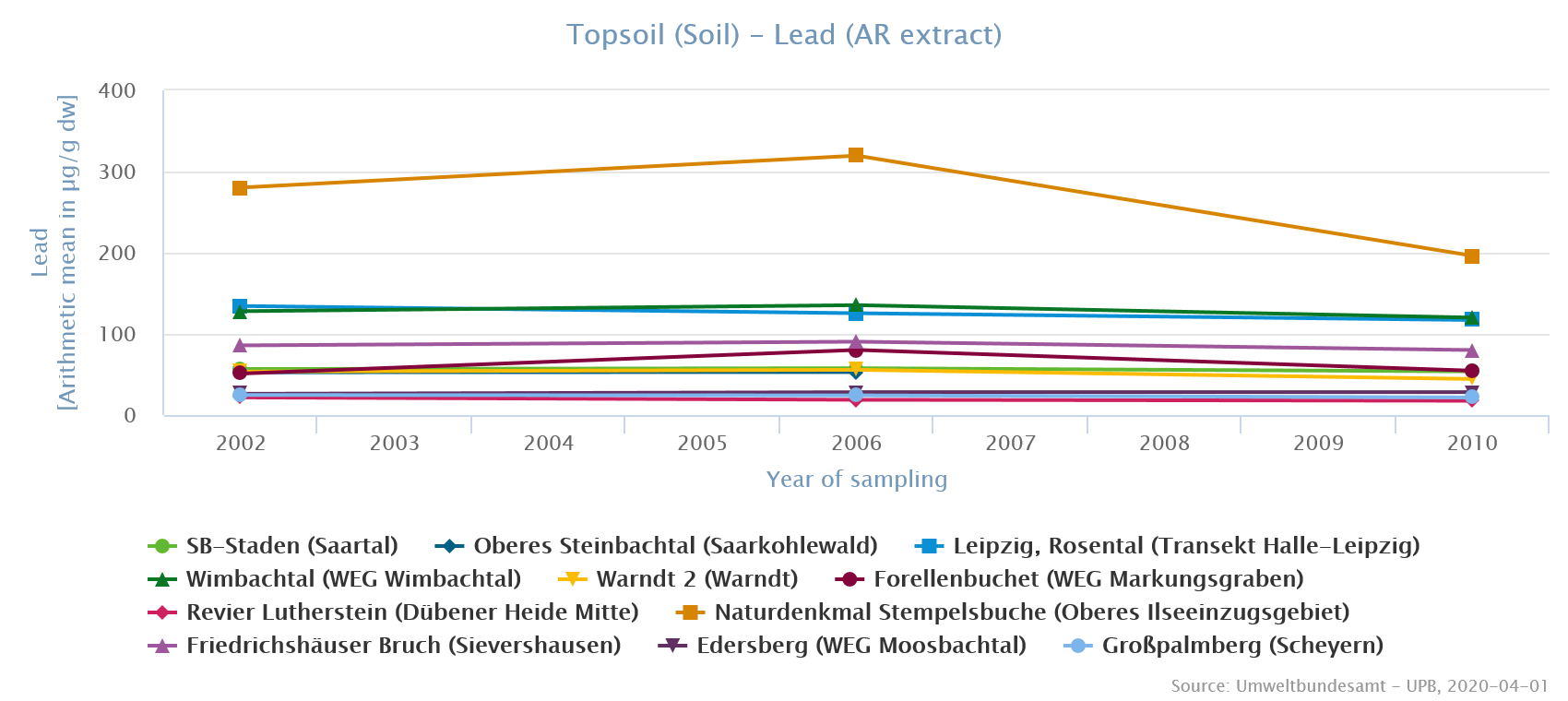Lead in soil
Natural background concentrations cause high lead concentrations in soil from the German uplands Harz
Lead is a toxic heavy metal which is widely used by humans for numerous applications. In Germany, lead occurs for instance in the uplands Harz where it has been mined since the Middle Ages until end of the last century. However, high environmental concentrations as found at the ESB sampling site Naturdenkmal Stempelsbuche
in the national park Harz still give evidence of the former mining activities. The relatively high lead concentrations in the organic layer indicate that also atmospheric deposition of lead originating from recent anthropogenic activities plays a role in soil contamination.
The routinely analysis of soil for lead was not continued after 2010.


Recommended profiles
Specimen
-
Soil is livelihood and biosphere for humans, animals, plants and soil organisms. All the substances brought in are transported, transformed and/or accumulated in the soil.
Analytes
-
Naturally occurring poisonous heavy metal
Sampling area
-
Park area in the centre of Leipzig city
-
The sampling site Revier Lutherstein is located in a forestal area at an altitude of 180 m.
-
The sampling site Wimbachtal is located in a high valley at an altitude of 1100 m.
-
The sampling site Naturdenkmal Stempelsbuche is located in a spruce forest within the catchment area of the upper Ilse river at an altitude of 640 m.
-
The sampling site Friedrichshäuser Bruch is located in the forest district Sievershausen at an altitude of about 500 m.
-
The sampling site Edersberg is located in a mixed forest at an altitude of about 410 m.
-
The sampling site Großpalmberg is located in a mixed forest at an altitude of about 500 m.
-
The sampling site SB-Staden is located in a floodplain between the Saar and the city of Saarbrücken.
-
The sampling site Warndt 2 is located in the forest district Warndtweiher at an altitude of 247 m.
-
Landscaped formed by mining
-
The sampling site Forellenbuchet is located in the core zone of the National Park Bayerischer Wald at an altitude of 1000 m.